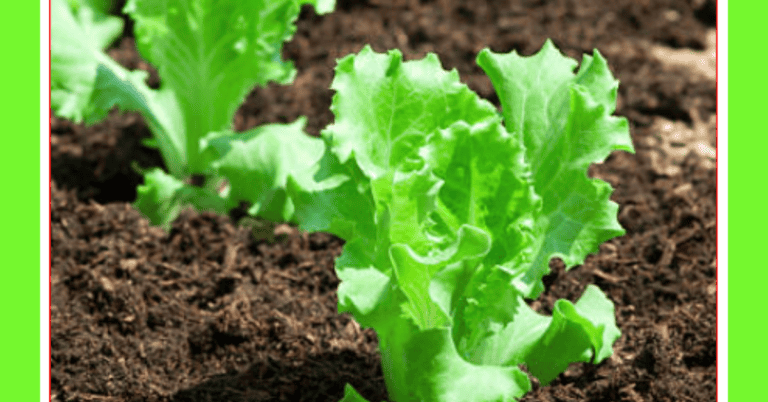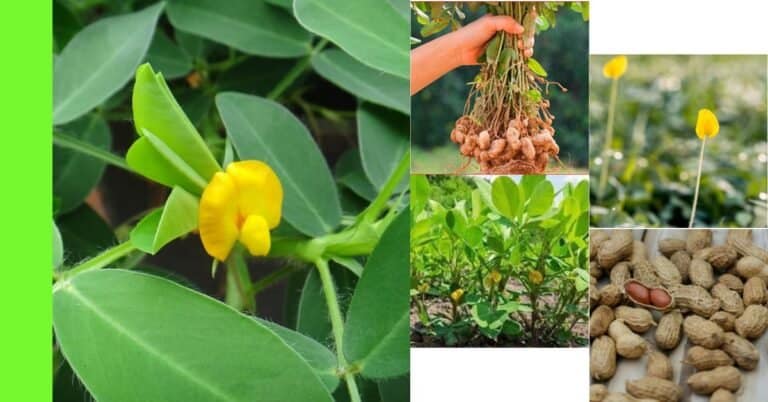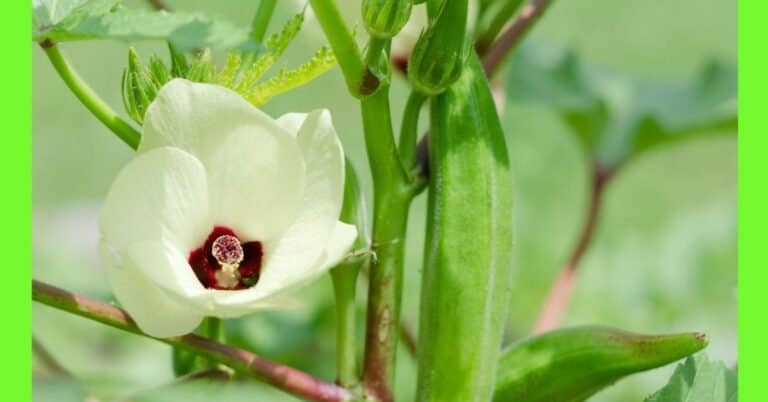Planting Pepper: See How To Plant Pepper

Every Nigerian chef knows the importance of pepper in their recipe.
Pepper is used to flavour food and is known for its hot taste, which varies depending on the type of pepper.
There are different types of pepper in Nigeria.
But the step to growing the various types of pepper is the same
The planting step is also similar to growing tomatoes.
This article is a practical guide that will equip you with the knowledge and skills to grow peppers successfully in your garden or farm.
With this information, you’ll be ready to embark on your pepper-growing journey confidently.
Planting Season for Pepper
Pepper-like tomatoes can be grown all year round.
March through April are used for early planting, June and July for mid-planting, and September through February for late planting.
Although pepper may be cultivated in all states in Nigeria, the northern region produces significantly more of the crop for commercial use.
Planting Pepper
Step 1: Seed Selection
The main way pepper is planted is from seed.
To grow the plant, you will need to buy seed or seedlings.
You may purchase this at farm or garden stores.
There are various seed types for the various pepper varieties
Choose the kind of pepper you wish to plant first.
For example, habanero pepper
Check for the seed varieties that are best for you
Examples of habanero seed varieties are
- Efia F1 Hybrid Habanero Hot Pepper
- Caribbean Red Habanero
- Piquante F1 Habanero Hot Pepper, etc.
Seeds should be selected with care because the seed variety affects the pepper’s quality, yield, and disease resistance.
Proceed to step 3 if you are purchasing seedlings for planting.
Establishing and maintaining a nursery is the first stage in planting pepper from seed.
Although the crop can still be grown directly from the soil, nurseries are prepared for best practices and better results.
Step 2: Nursery Preparation
- Raised beds or bags (seedling tray, nursery pot, or seedling bags) can be used for nursery preparation.
- The soil in this bag should be a mixture of soil and compost or organic manure.
- The quantity of bags you need to fill depends on how many pepper plants you wish to grow.
- Each bag has one seed.
- Create a hole that is ½ inches deep in the soil in each bag or container, then put in the seed. (Seeds should be dry when planting except where they are pre-soaked for planting to avoid mould and rotting.
- Fill the hole with soil.
- Wet the ground.
2b. Nursery Location
Ensure the nursery is in a shady area, such as on the balcony or beneath a tree.
2c. Germination
Pepper germinates within 7 to 21 days of planting. (Soaking pepper seed in warm water can help hasten germination, but this process is optional and not compulsory).
After about 3 to 4 weeks, the seedling should be ready for transplanting.
By this time, the plant should have grown 4 inches (10 cm) to 6 inches (15 cm) in height and had 3 to 5 leaves or more.
Step 3: Transplanting
The next step is transplanting the seedlings to the ground, raised bed or container.
3b. Location
Choose a spot that receives enough sunlight; peppers need at least 6 to 8 hours daily.
The soil they will be planted in should drain well and not become soggy.
Although they grow well in most soil types, I suggest sandy-loamy soil.
3c. Land Clearing and Preparation
- Remove any unwanted plants, weeds, or shrubs from the selected area.
- To soften the soil, till it.
- Mix manure into the ground.
- Wet the soil with water
3d. Transplant
- It is best to perform transplants early in the morning or late in the evening after the sun sets.
- Dig a hole in the earth the same size as the seed-growing bag or tray.
- Take the soil and seedling plant from the tray or bag cautiously.
- Gently insert it into the hole.
- Fill up the opening with sand.
- Set each plant apart roughly 1.5 ft (45 cm) to 2 ft (61 cm).
Step 4: Watering
The pepper plant needs to be watered from time to time.
If the crop is being planted in the dry season
All that the plant will need is irrigation.
Make sure you water the plant once a day.
The ideal times to do this are early in the morning or evening.
If the crop is being grown during the rainy season,
Although it’s not necessary to water the plant every day, make sure to do so when it doesn’t rain.
Water the roots of the plant when you water it.
The plant’s leaves and stem should not be watered; the plant may become infected.
Step 5: Stacking
Pepper plants that produce heavy fruits must be staked, as their stem is not strong enough to support them.
This is done by placing a rod or stick close to the plant and gently attaching the plant to the stalk.
Bamboo sticks can be used for this when planting pepper.
Step 6: Apply Manure
Don’t forget to fertilize the plant with compost or manure when planting pepper
after about four weeks after transplanting; repeat the process at least once a month.
Step 7: Pruning
Pruning the plant occasionally lowers the chance of insect and disease infestation and increases pepper plant yield.
Maturity and Harvesting
Now, we have come to the most interesting part of the growing process: the point of maturity and harvesting, where we reap the fruits of our labour.
Pepper matures 60 to 150 days after transplanting, depending on the species.
Some species take longer, while others take less time.
| Type of Pepper | Maturity (Days) | Average Yeild Per Plant (Kg) |
| Scotch Bonnet Pepper | 90 -120 | 0.7 – 1.1 |
| Habanero | 70 – 85 | 0.7 – 1.1 |
| Cayenne | 70 – 100 | 0.5 – 1 |
| Bell Pepper | 60 – 90 | 1.4 – 2.3 |
| Ghost pepper | 100 – 120 | 0.2 – 1 |
| Bird Eye Pepper | 90 – 120 | 0.2 – 0.7 |
| Nsukka Pepper | 90 -120 | 0.5 – 1.1 |
How do we know if our pepper is ready to be harvested?
One signal to know is the colour. The colour of a ripe pepper changes from Green to its due colour, either red, yellow or gold, depending on the species.
Or if green is the ripe colour, it remains green but a clearer or darker shade.
Peppers are edible at any growth stage; nevertheless, the flavour will differ.
This reveals the next signal: the pepper gives a hot aroma.
Another parameter is that the plant stops growing in size, and the pepper fruit grows to its suitable size.
Now, when you are sure that your peppers are ready for harvest,
You can harvest them by cutting them off with a hand pruner.
You can also use your knife or scissors to cut the pepper from the stem.
Pulling the pepper off by hand can damage the plant.
Remove the pepper from the branch, cutting it by the stem, leaving an excess of approximately 3 cm (1.2 inches) to preserve its quality.
How To Calculate The Quantity Of Pepper Your Farm Can Produce
We will use an acre of land and scotch bonnet pepper for this example.
using a planting spacing of 0.45 m (1.5 ft) by 0.91 m (3 ft)
1. Calculate the area needed for one plant
0.45 m x 0.91 m = 0.4095 m2
2. Change the area of the land to m2
we are using an acre, so
1 acre = 4046.86 m2
3. Calculate the number of plants per acre
Number of plants = Area of land / Area needed for one plant
?= 4046.86 m2 / 0.4095 m2
Number of plants =9878 plants
4. Estimate the yield per plant
Assuming that the yield for one plant is 1.1 Kg
Land yield = Number of plants x Yeild per plant
Yield for one acre = 9878 plants x 1.1 Kg = 10,865.8 Kg
As a result, with the specified spacing, you can anticipate about 10,865.8 Kg of peppers per acre if each Scotch Bonnet pepper plant yields an average of 1.1 Kg of peppers.
For more accurate results, adjust the yield per plant according to your unique growth conditions and historical data.
Pests and Diseases
Pests and diseases are some of the issues that affect pepper plants.
When you prune, water, fertilize, or manure, watch for these things.
Ensure they receive the proper care to maximize the output of your plants.
Here are a few of these pests:
- Aphids
- Beetle
- Armyworm
- Grasshopper
- Locust
- Fruit Work
- Mites
Some of these diseases are:
- Damping off diseases
- Powdery Mildew
- Southern Blight
- Grey leaf spot
- Cucumber mosaic viral
- Bacterial wilt
- Fusarium wilt
Pest and Diseases Control
It is in our best interest to prevent and, if possible, stop the effects of pests and diseases,
- Practice crop rotation
- Plant resistant varieties
- Keep the garden or farm clean, remove all debris
- Avoid excess moisture on plant
- Ensure the soil is well-drained
Storage
While it’s best to use the crop when it’s ripe and fresh, pepper can be kept for a long time by storing it in a dry, cool place with good ventilation.
They can also be stored by freezing and drying.
I believe you have received what you need to cultivate your pepper seed.
See also how to preserve tomatoes at home.
I hope this article was helpful.






